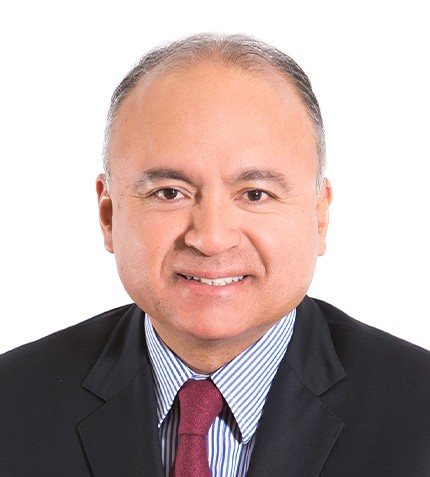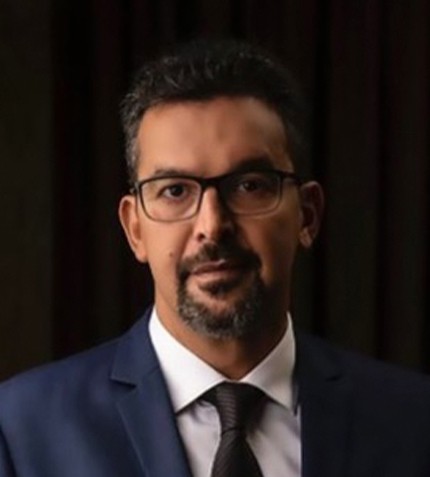
"We have observed increased dialogue and a more market-friendly cabinet."
Víctor Gobitz
PRESIDENT, NATIONAL SOCIETY OF MINING, PETROLEUM AND ENERGY (SNMPE)
What have been the most significant initiatives of SNMPE during 2023?
We have focused on three major themes. Firstly, we have concentrated on streamlining the process of acquiring licenses and permits, without compromising environmental, social and safety standards. We have also worked to establish a unified platform with state representation to provide a holistic overview to mining and to avoid lengthy step-by-step processes.
Secondly, we have addressed the issue of illegal mining and its connection to criminality. We advocate for full traceability of this activity to identify those involved, understand the extent of the problem, and identify the ultimate beneficiaries.
Lastly, we have expressed concerns about the lack of transparency in Petroperú, especially regarding the use of public funds and decisions made behind closed doors. For example, we have seen how investment in a refinery has escalated from US$1 billion to US$6 billion, and how oil lots have been awarded without a competitive tender process.
How do you analyze the current state of the Peruvian mining sector?
After the attempted coup on December 7, 2022, the government led by Dina Boluarte has managed to stabilize the country’s situation. While we mourn the loss of nearly 60 lives during those violent events, we recognize that Peru has since enjoyed stability, evidenced by a significant increase in production, especially in the southern region.
We have also observed increased dialogue and a more market-friendly cabinet. The recent declaration of a state of emergency in the province of Pataz demonstrates the government’s commitment to taking necessary actions.
However, we are concerned about the lack of large-scale projects after Quellaveco. Although Peru has an interesting pipeline of projects exceeding US$50 billion, no significant projects have been announced in recent months. This is partly due to country risk and uncertainty in the international market, especially in China, the main consumer of copper. The current price of copper does not incentivize investment in new mines. Although existing operations and expansions will continue, new investments will be limited until the price reaches a more favorable level, probably around US$10,000/t.
Can you provide a brief context about illegal mining and explain its effects?
The richness in geology, combined with a long mining tradition and a weak state, has allowed for the emergence of artisanal mining. There was an unsuccessful attempt at formalization, since a regulation was created to delegate permitting and oversight of artisanal and small-scale mining activities to regional governments. The result was the creation of two differentiated standards for large and medium-scale mining and small-scale mining.
This regulatory gap has created an environment akin to "the law of the jungle," enabling the unchecked proliferation of informal mining and processing facilities masquerading as small-scale operations. The economic recession, exacerbated by the pandemic, and the rise in gold prices, have exacerbated this problem. Additionally, recent waves of migration have heightened levels of criminal activity, increasing violence within mining areas. The combination of these factors has created an explosive cocktail that requires a comprehensive solution.
The solution does not lie solely in the Comprehensive Mining Formalization Registry (Reinfo) but in designing a broader and deeper strategy in collaboration with the government. It is necessary to understand the entire production chain and find ways to formalize it gradually, recognizing the complexity of the problem and avoiding social upheaval.
It is estimated that illegal gold production exceeds 2 million oz/y, representing more than US$4 billion.
What is the status of the life extension process at Antamina, given the projected investment of US$2 billion?
The Antamina life extension process is about to be completed after more than four years. It is not about increasing production but extending the mine's life. This process reflects the commitment of Antamina's shareholders to the country and its workers.
Do you have a final message for our readers?
Peru is a mining jurisdiction par excellence thanks to the geological formation of the Andes, which provides an extraordinary wealth of various metals and great quality of deposits. Additionally, it has an ecosystem that includes professionals and technicians with expertise in the mining industry, as well as suppliers of goods and services, contractors, and engineering and technology firms. Although there are pending regulatory challenges, the country offers a stable regulatory and tax framework and a favorable environment for private investment.










